This wonderful Cornish workshop and museum is dedicated to the legacy of studio pottery trailblazer Bernard Leach
Curator’s Choice: Scottish Modernists who blazed their own trail
Curator’s Choice: Scottish Modernists who blazed their own trail
27 Jul 2020
These pioneering women shaped the face of Scottish art, as a new exhibition shows.
In a new exhibition at The Scottish Gallery in Edinburgh, the somewhat overlooked talents of a host of modern artists who happen to be women are being celebrated. During the latter part of the 19th century, a variety of painters, printmakers and sculptors dispelled the myth that female creativity should be confined to the role of muse. Their exceptional works shaped not only the face of art in Scotland, but far beyond. We asked the gallery’s managing director, Christina Jansen, to shed light on some of the most exciting works currently on display, and to tell the stories of their creators.
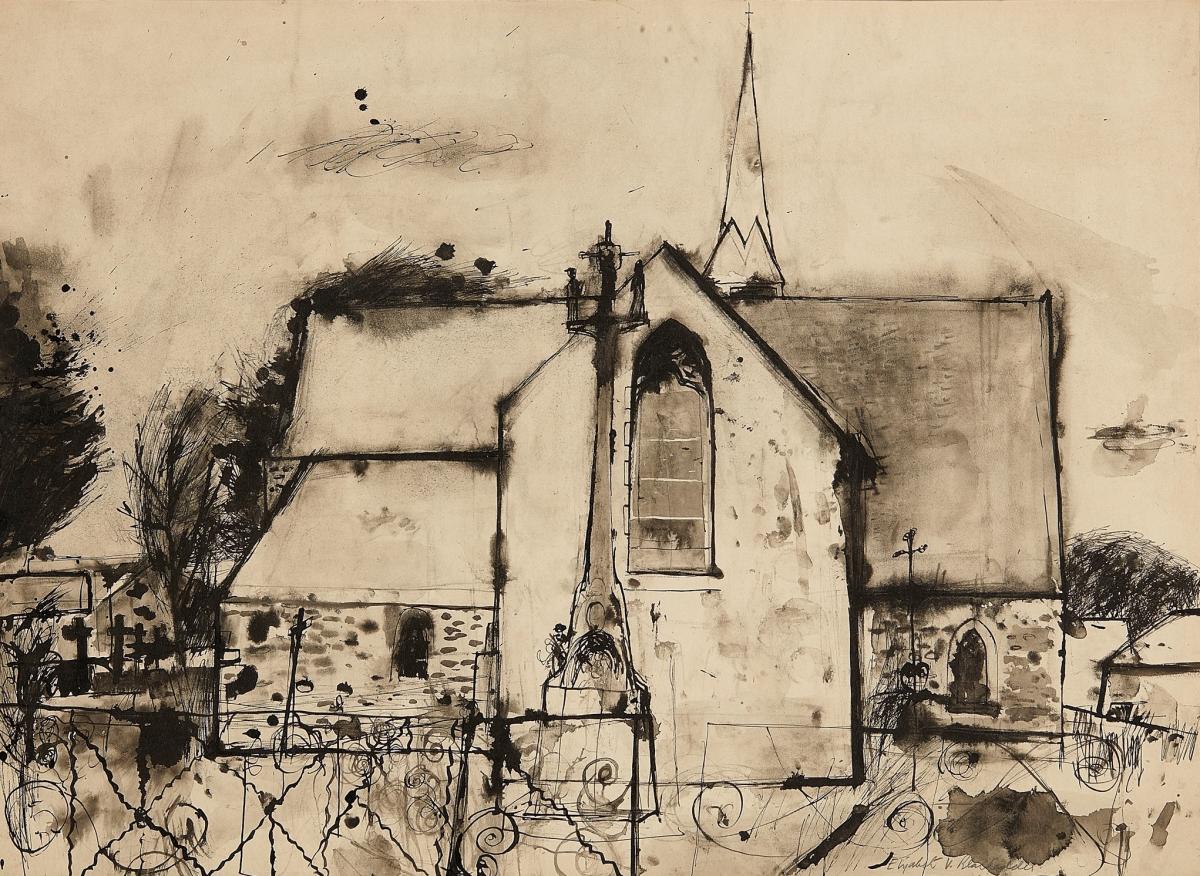
Dame Elizabeth Blackadder, Church in Brittany
Elizabeth Blackadder’s pen and wash drawings are alone sufficient to secure her reputation as one of the greatest post-war Scottish artists. Based on acute observation and instinctive choices of detail that combine ‘dry’ application of tonal washes and delicate lines, they are immensely visually satisfying. She admired Robert Henderson Blyth, whose own wash drawings provide the closest comparison, and like all her generation something is owed to William Gillies, at least in her choice of subject: such charms revealed from the mundane. Brittany was a favourite destination for Blackadder and her husband, John Houston; the clarity of the light and character of the coast drawing them back.
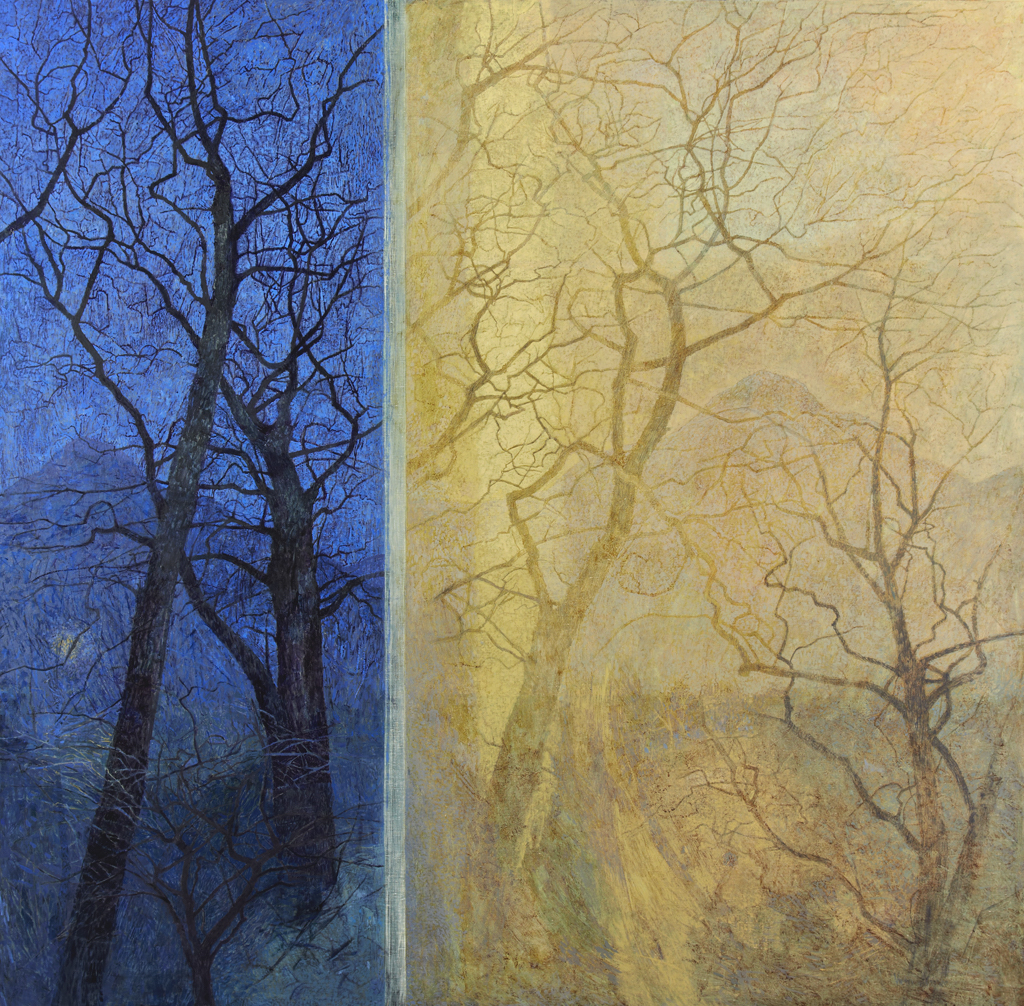
Victoria Crowe, From Dusk to Wakening
From Dusk to Wakening was made in the artist’s Edinburgh studio, which overlooked Queen’s Park. Her themes of interior and exterior, repetition and variation are present but explicitly contained in the idea of the span of the night. Crowe evokes the dream world – it is not dusk to dawn but dusk to wakening – the repeated filigree of winter branches can represent the neurons of our brains, recharging in sleep but unconstrained by the logic of consciousness. When we wake, we draw back the curtain to reassure ourselves that all is well, that the profile of Arthur’s Seat is in its place and the trees are renewed by the day.
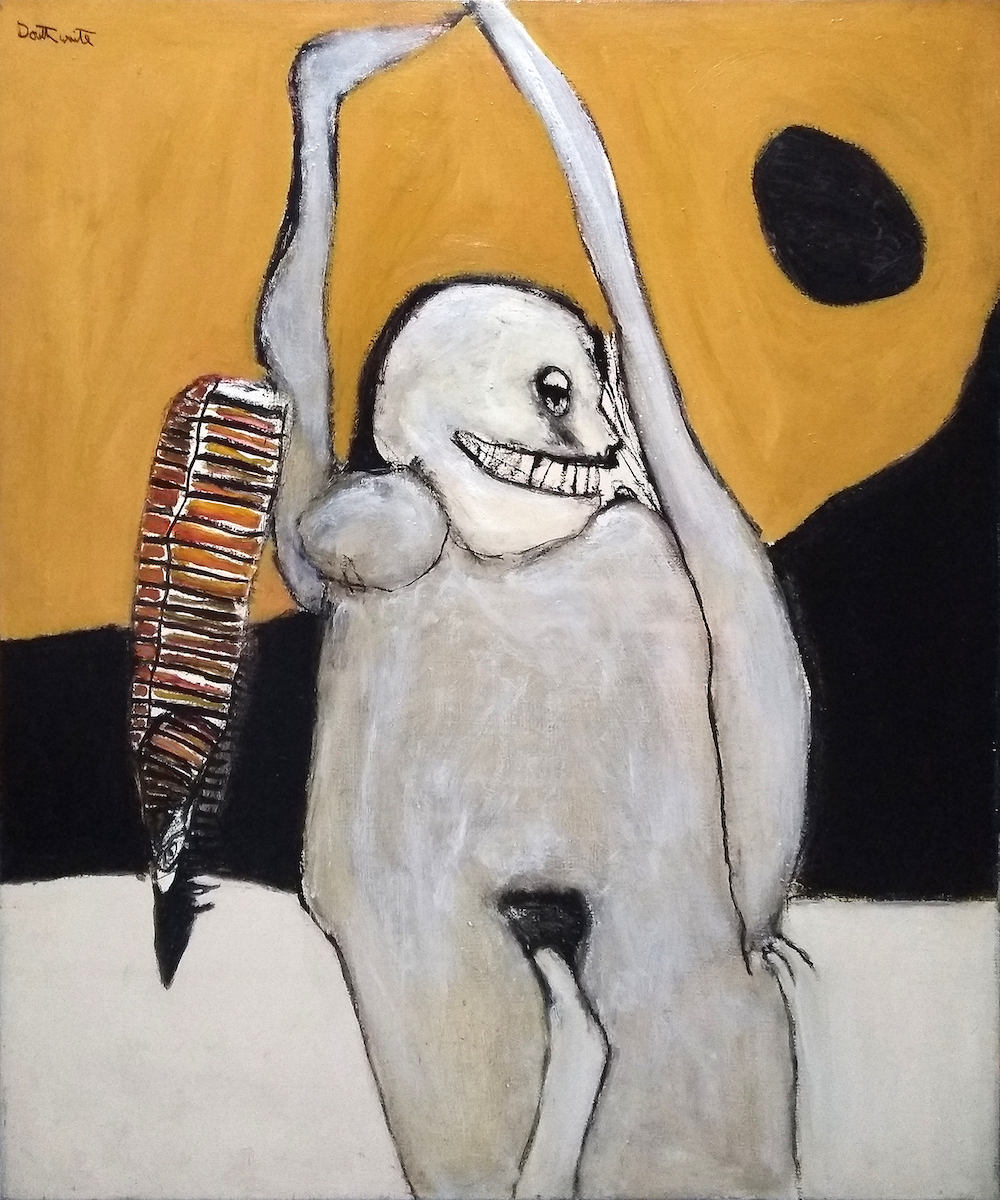
Pat Douthwaite, Woman with Reptile, c1970
Pat Douthwaite’s most significant subject throughout her life was the female figure, clothed or naked, real (in the sense of a real woman) or grotesquely imagined. Her heroines – Amy Johnson, Mary Queen of Scots, an alphabet of goddesses, American bandits – are at once self-portraits and celebrations of female power. The woman is often accompanied by a creature – a sort of Pullmanian daemon or, as in Wicker, her familiar. InWoman with Reptile the grinning central figure poses like a showgirl stripped of her glamour, while the patterned reptile, an ancient atavistic symbol, suspended inside down, adds to the queasy atmosphere along with the dirty background colour, like dingy stage lighting.
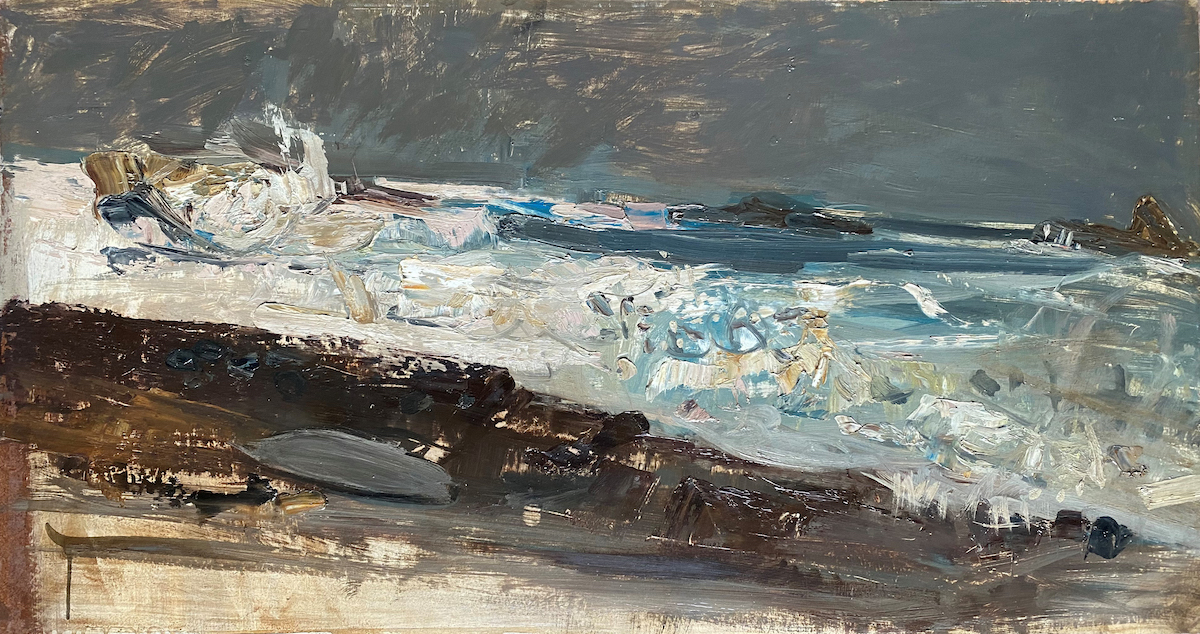
Joan Eardley, A Wave, 1957
One of Joan Eardley’s favourite subjects at Catterline was the storm, crashing into the bay. Eardley would come down to the dark, pebbled beach so that the power of storm and wave are above and around, seeming to envelop artist and viewer. The features of the bay are in this painting: the breakwater on the right marking the entrance from the south, the rocks, so dangerous to the returning herring fleet, and the water breaking over the underwater shoals. Like the Impressionists, she worked in front of the subject, and the urgency is palpable – to record the passage of natural ferocity – with two hours perhaps to get her response onto the board before retreating to her cottage, soaked and half-frozen to thaw out over a mug of tea.
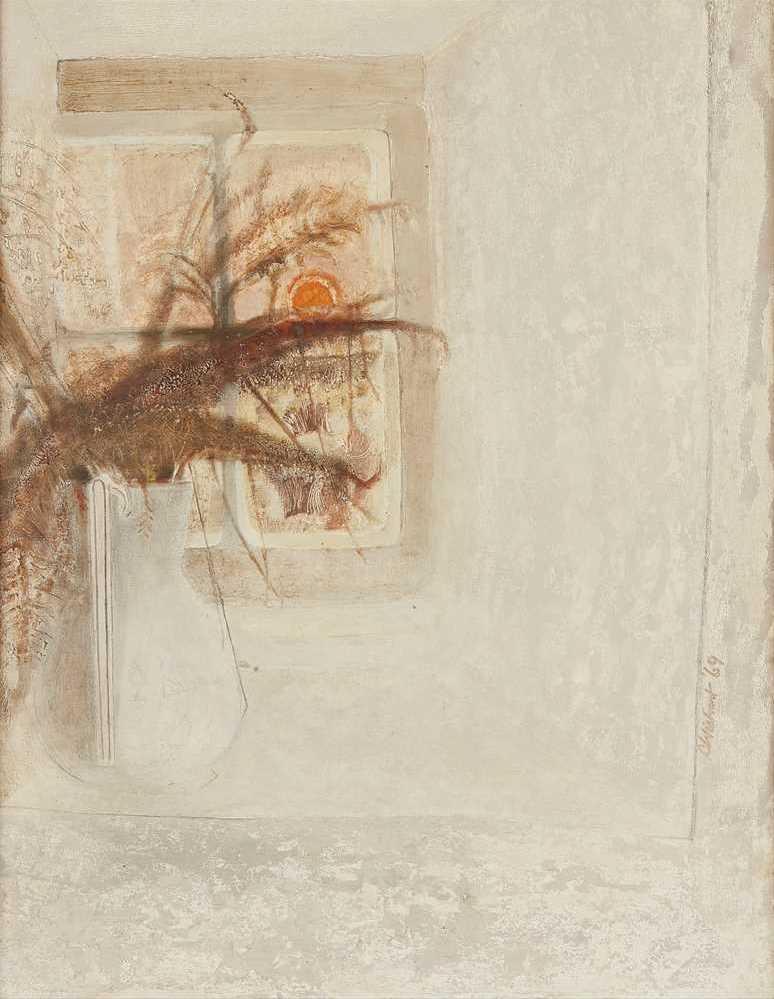
Sylvia Wishart, Evening Window with Bracken
Evening Window with Bracken was Wishart’s submission to the Royal Scottish Academy in 1970, one she at least considered worthy of exhibition; it is far more. The evening sun in the west pours light into the window of her cottage in Kirkwall. On the whitewashed ledge, formed by the thickness of the stone wall, built to withstand the winter gales, is a white jug bearing a few fronds of bracken, completing her palette – orange, green turning brown, and white. Her interior still life is effortlessly sophisticated while still rooted in place and experience. Her matière is her own recipe: oil, gouache, pencil, achieving a delicacy of texture extended as often to her own hand-painted frame. She is about to leave Orkney for the mainland, to teach in Aberdeen, but the islands are always with her – their weather, contrasting seasons and life made precious by its existence on the margins.
SEE
Women Modern Masters, until 29 August
The Scottish Gallery
About the Author
Christina Jansen
JOIN OUR MAILING LIST
Become an instant expert!
Find out more about the arts by becoming a Supporter of The Arts Society.
For just £20 a year you will receive invitations to exclusive member events and courses, special offers and concessions, our regular newsletter and our beautiful arts magazine, full of news, views, events and artist profiles.
FIND YOUR NEAREST SOCIETY
MORE FEATURES
Ever wanted to write a crime novel? As Britain’s annual crime writing festival opens, we uncover some top leads
It’s just 10 days until the Summer Olympic Games open in Paris. To mark the moment, Simon Inglis reveals how art and design play a key part in this, the world’s most spectacular multi-sport competition



